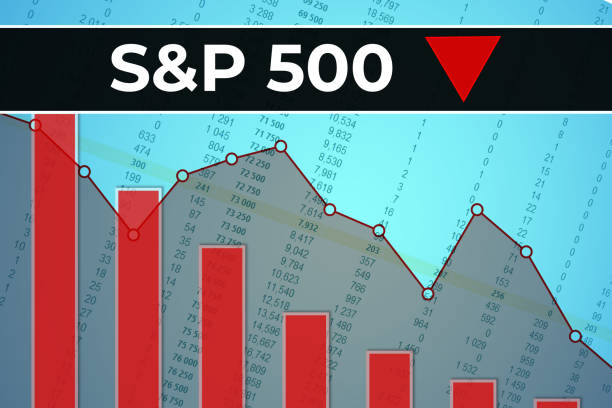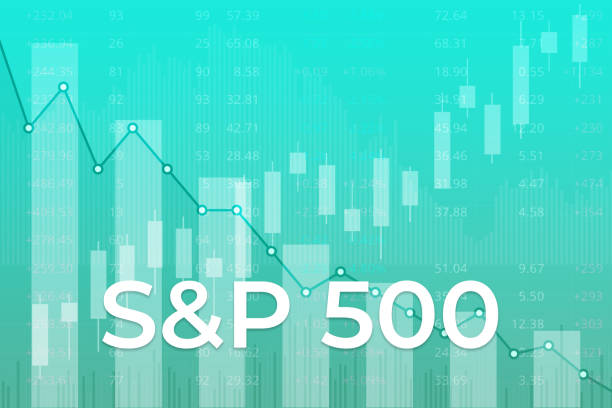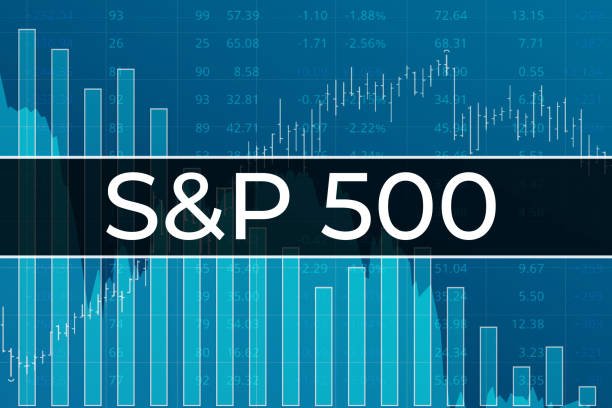The S&P 500 index faces potential risks due to persistent high inflation, which could lead to a significant decline in stock prices. Experts warn that the index could plunge below 5,000 if inflation continues to defy expectations and the Federal Reserve delays rate cuts.
Inflation’s Impact on Rate Cuts and Market Sentiment
High inflation has been a major concern for investors and the Federal Reserve. Recent data has shown that consumer prices are rising at a faster pace than anticipated, which has led to a reassessment of rate cut expectations. The unexpected inflation figures have caused a decline in the S&P 500, with the index falling 1.4% on one occasion and experiencing its worst day since March 2023 on another.
Market Sentiment and Rate Cut Expectations
Market sentiment has shifted in response to the inflation data. Investors are now less optimistic about the timing of Federal Reserve interest rate reductions, which has led to a surge in bond yields. The 10-year Treasury yield has reached its highest level since November, indicating that investors expect fewer rate cuts. This shift in sentiment has caused a decline in the S&P 500, with the index experiencing significant losses on days when inflation data is released.
Potential Consequences for the S&P 500
The persistent high inflation and its impact on rate-cut expectations could lead to a significant decline in the S&P 500. If the Federal Reserve delays rate cuts, it could intensify economic pressures and dampen Wall Street’s exuberance. This could result in a plunge below 5,000 for the S&P 500, as investors become increasingly cautious about the market’s prospects

Potential Impact of High Inflation on S&P 500: RBC’s Perspective
RBC Capital Markets has increased its year-end 2024 S&P 500 price target to 5,300, up from 5,150 previously. The bank’s head of U.S. equity strategy, Lori Calvasina, believes the strong market performance so far this year is justified and that further upside is possible.
RBC’s GDP model has shifted from a cautious to a constructive signal for the stock market in 2024. The bank expects the S&P 500 to generate $237 in earnings per share this year, up from its prior forecast of $234 and believes the index can sustain a multiple of around 22 times. However, RBC also sees some conflicting cross-currents for stocks. While its economic, valuation, and cross-asset models are sending constructive signals, the sentiment and politics models are less enthusiastic. The bank’s valuation model implies the S&P 500 can reach a P/E of more than 22x by the end of 2024, supporting its price target
S&P 500 Could Drop Back Under 5000 if There Are No US Federal Reserve Rate Cuts This Year
The S&P 500 could potentially drop back below 5,000 if the US Federal Reserve does not cut interest rates this year as expected, according to market experts. Here’s why:
Persistent High Inflation Delays Rate Cut Expectations
Stubborn high inflation in the US has been surprising economists and causing investors to reassess their expectations for Fed rate cuts. Recent inflation data has come in higher than anticipated, leading to a 12% chance that the Fed will not cut rates at all in 2024, according to futures markets. This scenario of tighter monetary policy than expected could put downward pressure on the S&P 500.
Potential Negative Impact on Stocks
The S&P 500 has been resilient so far, trading near all-time highs around 5,300. However, the index has experienced some significant declines of over 1% on days when inflation data disappoints. If high inflation persists and the Fed is forced to keep rates higher for longer, it could intensify economic pressures and dampen Wall Street’s optimism, potentially causing the S&P 500 to plunge back below 5,000.
Importance of Upcoming Inflation Data
Investors are anxiously awaiting key inflation reports this week, including the April CPI data on Wednesday. The outcome of these releases could significantly impact expectations for Fed policy and the trajectory of the S&P 500. If inflation remains stubbornly high, it would increase the chances of no rate cuts in 2024 and raise the risk of the S&P 500 falling back below 5,000

UnitedHealth Group (UNH) Stock Declines While Market Improves: Some Information for Investors
UnitedHealth Group (UNH) stock has declined recently while the overall market has improved, according to recent reports. Here are some key points for investors:
- In the latest market close, UNH stock reached $503.68, down 0.88% compared to the previous day, while the S&P 500 gained 0.03%.
- Over the past month, UNH stock has risen 3.91%, underperforming the S&P 500’s 4.19% gain and slightly outperforming the Medical sector’s 3.67% increase.
- UnitedHealth Group is expected to report Q2 2024 earnings per share (EPS) of $6.76, up 10.1% year-over-year. Revenue is projected to reach $98.88 billion, up 6.44% from the prior year quarter.
- For the full year 2024, consensus estimates call for EPS of $27.60 and revenue of $398.1 billion, increases of 9.87% and 7.13% respectively compared to 2023.
- UNH currently has a Zacks Rank of #3 (Hold). The company is trading at a forward P/E of 18.41, higher than its industry average of 15.7.
- The Medical – HMOs industry, which UNH is part of, currently has a Zacks Industry Rank of 68, placing it in the top 27% of all industries
Final Market Insights: The Implications of Inflation
The implications of inflation on the stock market are multifaceted and influenced by various factors. Here are some key insights:
Impact on the Stock Market
- Volatility: Inflation can lead to a highly volatile market environment as investors speculate about future price movements and adjust their expectations accordingly.
- Stock Performance: Value stocks tend to perform better during periods of high inflation, while growth stocks tend to struggle due to higher interest rates and lower cash flows.
- Interest Rates: Rising inflation often prompts central banks to increase interest rates, which can negatively impact stock prices by increasing borrowing costs for companies.
- Earnings Growth: Companies that can maintain revenue and earnings growth during inflationary periods tend to perform better, especially those that can pass on higher costs to customers.
Historical Trends
- Real Returns: Historical data suggests that high inflation periods tend to correlate with lower real returns on stocks. The highest real returns are typically seen during periods of moderate inflation (2-3%.
- S&P 500 Performance: The S&P 500 has historically performed well after inflation peaks and begins to normalize, with double-digit gains following 13 major inflation peaks since 1950.
Factors Influencing Impact
- Level of Inflation: Moderately rising inflation (2-4%) tends to coincide with the highest stock returns, while high inflation above 6-7% poses more risk.
- Persistence of Inflation: Short-term spikes in inflation may have little impact if they are not sustained, but persistent high inflation can erode corporate profits and dampen investor sentiment.
- Economic Growth: Moderate inflation often accompanies economic growth, which can be beneficial for stocks.
Conclusion
The S&P 500 faces significant risks due to persistent high inflation and its impact on rate cut expectations. The index could experience a significant decline if inflation continues to defy expectations and the Federal Reserve delays rate cuts. Investors should be prepared for potential market volatility and adjust their strategies accordingly to navigate the challenges posed by high inflation.
Sifting through the sea of data, the narrative is poignant: the intersection of high inflation and S&P 500’s fate is not a story of mere numbers, but a saga of caution and foresight. As RBC’s analysts render their counsel, they don’t just foresee a potential numerical dip—they identify a bellwether of economic sentiment, a testament to market resilience, and a call for investor prudence. The S&P 500’s dance above or below the 5000 threshold will pivot not just on the whims of the market, but on the orchestrated moves of policymakers, the rhythm of inflation, and the strategic play of investors nationwide

1 thought on “S&P 500 Faces Potential Plunge Below 5000 Amidst Stubborn High Inflation, Experts Warn!”